A slow-moving story largely about characters hanging out and going about their workaday lives? Is this Once Upon a Time...in Hollywood or Jackie Brown?
That's right, after a decade devoted to genre experiments which alternate quiet moments with jarring explosions Tarantino is back in mature character study mode with Once Upon a Time. Despite the mega-wattage star power of Leonardo DiCaprio, Brad Pitt, and Margot Robbie and the impeccably propulsive trailers, Once Upon a Time turns out to be a bit of a hangout movie, a day or two in the life of some famous (Robbie's Sharon Tate) as well as some not so famous people (DiCaprio and Pitt's D-list actor and his stuntman), all of them hurling toward an ill-defined doom only we know about.
Overly long and certainly self-indulgent, Once Upon a Time will repel those with little patience and certainly renew the argument that Tarantino's ideal format is no longer the big screen but probably a limited streaming series. However, to understand what makes this movie tick you need to first understand Jackie Brown and everything Tarantino has done since then.
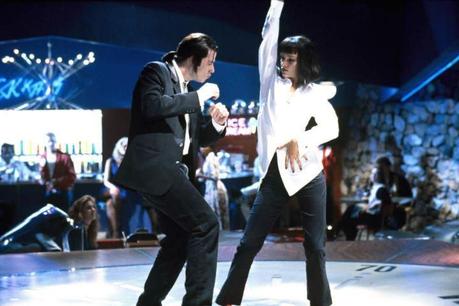
Let's start with the obvious: In 1994, Tarantino's Pulp Fiction was annointed as the single most influential film of the 90s before the rest of the decade had even been allowed to play out. Such quibbles mattered not to the critics of the day who instantly deduced that Pulp Fiction was a rare, instant game-changer, a line in the sand success separating everything before and after. Nothing the rest of the 90s had to offer could ever hope to be so important. The world had just witnessed the Star Wars o f independent film.
Tarantino walked away from it all with yet more padding for his already immense ego, multiple awards, including an Oscar for his screenplay (co-written with the oft-forgotten Roger Avary), as well as a blank check for his next project. Whatever he wanted to do, the Weinsteins were on board.
Ever the student of film history, however, Tarantino knew all too well the pitfalls of trying to outdo your big breakthrough hit. Since so few had actually watched his true first movie, Reservoir Dogs, whatever he made after Pulp Fiction was going to feel to the world like his true second movie, which is often more important than a director's first movie.
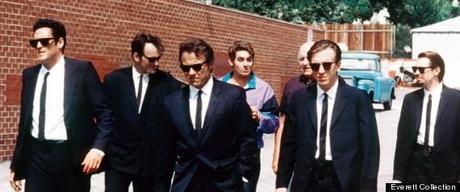
To paraphrase Rocketman, where there was once darkness, there was now him, and with that spotlight came a new set of expectations. Yet, while authors quickly churned out books about Tarantino despite having little to actually write about and Siskel & Ebert devoted an entire episode to him he bided his time and decided against trying to top himself.
"I wasn't trying to top Pulp. I was trying to go underneath it" became - and continues to be - Tarantino's go-to line for the movie he made next: Jackie Brown.
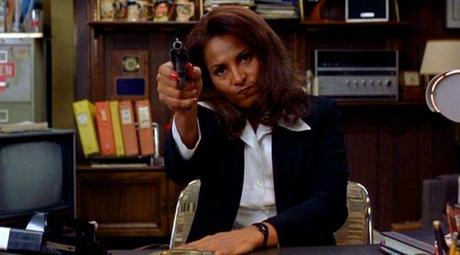
Deceptively sold as and still often lazily described as a blaxploitation homage because of Pam Grier's presence in the title role, Jackie Brown is actually a mature, leisurely-paced exploration of getting old and taking one last shot in a life which is quickly dwindling away. Adapted from an Elmore Leonard novel, the story is filled with the type of characters we'd normally ignore in everyday life, like a middle-aged bail bondsman named Max Cherry (Robert Forster), a 44-year-old stewardess for the worst airline in LA (Grier), and a mumbly ex-con with a love for bowling shirts (Robert DeNiro). The low-stakes crime caper - Jackie tries to steal a hundred grand from a low-rent arms dealer (Samuel L. Jackson) - which emerges does so only in slow motion, metered out between scenes of people simply hanging out, watching TV, and going about their mundane, day-to-day lives.
Whereas, for example, Reservoir, True Romance (which Tarantino wrote, but did not direct), and Pulp Fiction got so much traction from hyperkinetic action intermixed with scenes in which characters talk about movies, Jackie Brown settled into a comfortable, almost action-free groove of letting the characters actually stop to watch some TV, listen to music, or maybe take an afternoon off from work to go see a movie - "whatever looks good" - at the mall. Maybe get high. See how long you can last during sex with a younger woman (for De Niro, it's just 3 minutes, though this was years before Viagara). Play out the clock of life, essentially. Only Jackie and Max seem to be aware that their window for true happiness is closing.
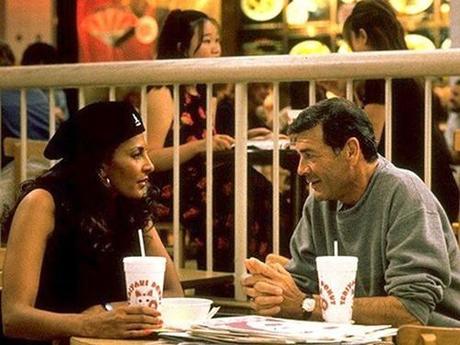
This was, of course, all by design. As Tarantino told best bud Robert Rodriguez, "Let me do a more mature film, let me do a more character-based film. Let me do a movie that people would expect from me when I was 45." For the record: he had just turned 34 by the time they started shooting.
In a sense, then, Jackie Brown is him playacting what he thinks a mature character study made by a seasoned director should look like. He leaned on Grier and Forster's own set of hardened life experiences to elevate the material, and they each came through, delivering career-best performances. While Forster was rewarded with an Oscar nomination, Grier was not, a fact Tarantino loudly complained about at the time.
Tarantino's ego took a real hit in the process. He had purposefully zigged when everyone expected him to zag, yet rather than receive universal praise for such ingenuity he looked into the faces of a lot of rather confused critics and ticket-buying audience members. Few outright hated the film, but few were quick to praise it the way they were with Pulp. While it made decent money it was still less than half what Pulp had pulled in three years earlier. The people of 1997, Tarantino concluded, just didn't get Jackie Brown. In the ensuing decades, the film's slow rise up everyone's "favorite Tarantino" list - for the record, it's in my personal top 5 - only serves to irritate the director even more. Where were they when he needed them?
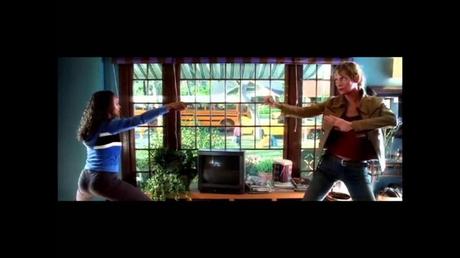
Tarantino's been running away from that feeling ever since, opening his next movie, Kill Bill: Vol 1, with Uma Thurman walking up to a front door and immediately attacking Vivica A. Fox, returning to his narrative trick of giving us the answers first and the questions later.. If people thought Jackie Brown was too boring, Kill Bill's non-stop action and anything goes attitude - drop in a 10-minute anime sequence, switch to black and white in the middle of the big finale - would dare anyone to ever look away from the screen. Audiences were completely transfixed, and despite only being his fourth film, Kill Bill - Tarantino, for the record, considers Kill Bill: Vol 1 and Vol 2 to be one film - was hailed as the director's big comeback.
That was over 15 years ago, though. Tarantino's already had another comeback since then. The colossal flop of his 2007 Robert Rodriguez collaboration Grindhouse and his half, Death Proof, of that ill-fated ode to drive-in cinema, led him to hunker down and get serious about his long-gestating WWII movie, 2009's Inglourious Basterds. To Generation X, Tarantino is and always will be first and foremost the guy who made Pulp Fiction. However, to Millennials they might know him more for Basterds, which introduced Christoph Waltz, Michael Fassbender, and Melanie Laurent to the world, and threw out the rules on what a historical drama can be.
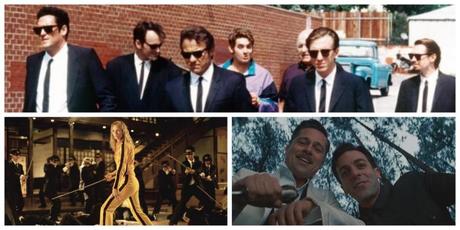
Tarantino has spent the past decade chasing that dragon, applying his Inglourious Basterds formula to the western ( Django Unchained, The Hateful Eight) and now to the true-crime period piece ( Once Upon a Time...in Hollywood). The tropes are getting easier to see coming, but that doesn't mean they're not enjoyably doled out in his self-assured hands.
A lot has changed since Jackie Brown. Heck, a lot has changed in just the four years since Hateful Eight. Is there truly a place for Tarantino is this new Hollywood? More pressingly, is Once Upon a Time...in Hollywood any good? Click over to Part 2 to find out.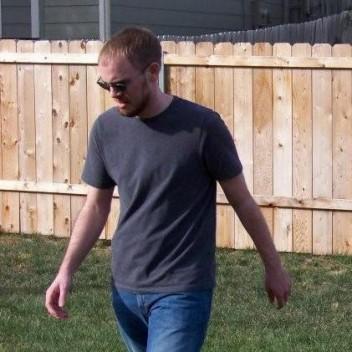
Grew up obsessing over movies and TV shows. Worked in a video store. Minored in film at college because my college didn't offer a film major. Worked in academia for a while. Have been freelance writing and running this blog since 2013. View all posts by Kelly Konda

